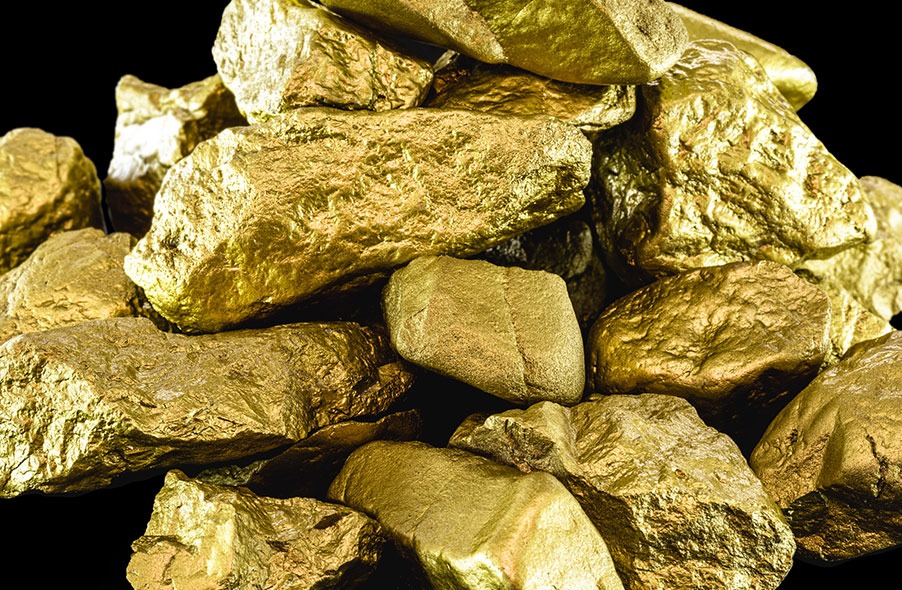On This Page
Table of Contents
Gold has captured human fascination for centuries, with its enduring value and symbolic meanings. But is gold a mineral? Gold is a precious metal that often finds itself at the center of discussions about natural resources. We will explore whether gold is classified as a mineral, its unique characteristics, and how it fits into the broader category of minerals.
What Makes a Mineral?
To understand if gold is a mineral, we first need to define what constitutes a mineral. In geological terms, a mineral is a naturally occurring, inorganic solid with a defined chemical composition and structure. Minerals are typically formed through geological processes over time, and they possess distinct physical properties such as hardness, color, and luster.
Is Gold a Mineral?
Now, let’s address the question head-on: Is gold a mineral? Yes, gold is indeed classified as a mineral. It meets all the criteria set by geologists for what defines a mineral. Gold is naturally occurring, with a chemical composition of Au (its atomic symbol), and it is inorganic. Gold also has a crystalline structure, which is common among minerals.
Gold stands out among minerals due to its unique properties. Unlike most minerals, gold does not oxidize, rust, or corrode easily. This resistance to tarnishing makes gold a highly prized material for various industries, including jewelry, electronics, and currency.
Gold Minerals and Their Forms
Gold, while commonly found as a pure metal, can also occur in combination with other minerals. These gold minerals form through geological processes that bring gold into association with other elements and minerals like quartz. For example, gold is often found in quartz veins, creating what are known as gold-quartz deposits. These deposits are highly sought after in the mining industry due to the richness of the gold minerals embedded within.
Why Gold Is Considered a Valuable Mineral
Gold’s classification as a mineral is not just about its formation and structure. It also has immense value due to its scarcity and usefulness in industries ranging from electronics to medicine. This makes understanding the nature of gold and minerals an essential aspect of various fields, especially in mining and material science.
Gold and Minerals: A Symbiotic Relationship
Gold and minerals share a symbiotic relationship in nature, where gold exists alongside other elements and minerals in geological formations. While gold itself is a mineral, its association with other minerals, like quartz, pyrite, and silver, enhances its extraction process. Mining companies like Barranco Gold, which specialize in extracting gold and other minerals, play a vital role in the global economy by providing the raw materials needed for everything from luxury items to high-tech devices.
The Economic Importance of Gold and Minerals
Gold is an essential mineral in the global economy. It’s not only valuable for its beauty and scarcity but also for its practical applications in technology, medicine, and industry. The extraction of gold from gold minerals contributes to local and global economies, supporting industries such as electronics, jewelry, and renewable energy.
FAQ
Is gold a mineral or a metal?
Gold is both a metal and a mineral. As a mineral, it occurs naturally in its pure form, and as a metal, it is used in various industries for its excellent conductivity and durability.
What are gold minerals?
Gold minerals refer to different forms and combinations of gold with other elements and minerals. These include gold-quartz deposits and electrum, an alloy of gold and silver.
Why is gold considered a mineral?
Gold is considered a mineral because it meets all the criteria of a mineral, including its natural occurrence, inorganic composition, and crystalline structure.
What other minerals are commonly associated with gold?
Gold is commonly found in association with minerals like quartz, pyrite, and copper. These combinations are important for gold extraction during mining.
How is gold extracted from gold minerals?
Gold is extracted from gold minerals through various mining methods, such as panning, sluicing, and cyanidation, which help separate gold from other minerals and materials.
Conclusion
Gold is undeniably a mineral, with distinct characteristics that make it unique in the world of natural resources. Understanding its classification helps us appreciate its widespread use and value. Whether you’re interested in gold as a collector’s item, an investment, or as part of the broader study of gold minerals, knowing what defines it can deepen your knowledge and appreciation of this fascinating element.
Read more about: What are Gold Miners?



